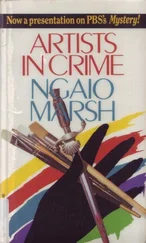Sarah Bolton - Famous European Artists
Здесь есть возможность читать онлайн «Sarah Bolton - Famous European Artists» — ознакомительный отрывок электронной книги совершенно бесплатно, а после прочтения отрывка купить полную версию. В некоторых случаях можно слушать аудио, скачать через торрент в формате fb2 и присутствует краткое содержание. ISBN: , Жанр: foreign_prose, foreign_antique, foreign_language, на английском языке. Описание произведения, (предисловие) а так же отзывы посетителей доступны на портале библиотеки ЛибКат.
- Название:Famous European Artists
- Автор:
- Жанр:
- Год:неизвестен
- ISBN:http://www.gutenberg.org/ebooks/39380
- Рейтинг книги:5 / 5. Голосов: 1
-
Избранное:Добавить в избранное
- Отзывы:
-
Ваша оценка:
- 100
- 1
- 2
- 3
- 4
- 5
Famous European Artists: краткое содержание, описание и аннотация
Предлагаем к чтению аннотацию, описание, краткое содержание или предисловие (зависит от того, что написал сам автор книги «Famous European Artists»). Если вы не нашли необходимую информацию о книге — напишите в комментариях, мы постараемся отыскать её.
Famous European Artists — читать онлайн ознакомительный отрывок
Ниже представлен текст книги, разбитый по страницам. Система сохранения места последней прочитанной страницы, позволяет с удобством читать онлайн бесплатно книгу «Famous European Artists», без необходимости каждый раз заново искать на чём Вы остановились. Поставьте закладку, и сможете в любой момент перейти на страницу, на которой закончили чтение.
Интервал:
Закладка:
He loved nature intensely. He studied every flower and tree about the country home; made companions of the river Arno, the changing clouds, and the snow-capped mountains. Passionately fond of music, he not only learned to play on the guitar and lute, but invented a lyre of his own, on which he improvised both the song and the air.
On the margins of his books he sketched such admirable drawings that his father took them to Andrea Verrochio, a famous Florentine artist, who was "amazed," and advised that the youth become a painter. Leonardo entered the studio of Verrochio when he was about eighteen, and at once became deeply absorbed in his work. He began to make models in clay, arranging on these soft drapery dipped in plaster, which he drew carefully in black and white on fine linen; also heads of smiling women and children out of terra cotta: already he had that divine gift of painting the "Da Vinci smile," which seems to have been born with him and to have died with him. He studied perspective, and with his fellow-students made chemical researches into the improvement of colors.
Verrochio was engaged in painting a picture of St. John baptizing Christ, for the monks of Vallombrosa, and requested Leonardo to paint an angel in the left-hand corner, holding some vestments. When the work was finished, and Verrochio looked upon Leonardo's angel, "a space of sunlight in the cold, labored old picture," as W. H. Pater says, in his "Studies in the History of the Renaissance," Verrochio became so discouraged "because a mere child could do more than himself," that he would never touch the brush again. This work is now in the Academy of Fine Arts in Florence.
About this time, according to Vasari, Leonardo made his famous shield Rotella del Fico . "Ser Piero da Vinci, being at his country house, was there visited by one of the peasants on his estate, who, having cut down a fig-tree on his farm, had made a shield from part of it with his own hands, and then brought it to Ser Piero, begging that he would be pleased to cause the same to be painted for him in Florence. This the latter very willingly promised to do, the countryman having great skill in taking birds and in fishing, and being often very serviceable to Ser Piero in such matters. Having taken the shield with him to Florence, therefore, without saying anything to Leonardo as to whom it was for, he desired the latter to paint something upon it.
"Accordingly, he one day took it in hand, but, finding it crooked, coarse, and badly made, he straightened it at the fire, and, giving it to a turner, it was brought back to him smooth and delicately rounded, instead of the rude and shapeless form in which he had received it. He then covered it with gypsum, and, having prepared it to his liking, he began to consider what he could paint upon it that might best and most effectually terrify whomsoever might approach it, producing the same effect with that formerly attributed to the head of Medusa. For this purpose, therefore, Leonardo carried to one of his rooms, into which no one but himself ever entered, a number of lizards, hedgehogs, newts, serpents, dragon-flies, locusts, bats, glow-worms, and every sort of strange animal of similar kind on which he could lay his hands; from this assemblage, variously adapted and joined together, he formed a hideous and appalling monster, breathing poison and flames, and surrounded by an atmosphere of fire; this he caused to issue from a dark and rifted rock, with poison reeking from the cavernous throat, flames darting from the eyes, and vapors rising from the nostrils in such sort that the result was indeed a most fearful and monstrous creature; at this he labored until the odors arising from all those dead animals filled the room with a mortal fetor, to which the zeal of Leonardo and the love which he bore to art rendered him insensible or indifferent.
"When this work, which neither the countryman nor Ser Piero any longer inquired for, was completed, Leonardo went to his father and told him that he might send for the shield at his earliest convenience, since, so far as he was concerned, the work was finished; Ser Piero went accordingly one morning to the room for the shield, and, having knocked at the door, Leonardo opened it to him, telling him nevertheless to wait a little without, and, having returned into the room, he placed the shield on the easel, and, shading the window so that the light falling on the painting was somewhat dimmed, he made Ser Piero step within to look at it. But the latter, not expecting any such thing, drew back, startled at the first glance, not supposing that to be the shield, or believing the monster he beheld to be a painting; he therefore turned to rush out, but Leonardo withheld him, saying, – 'The shield will serve the purpose for which it has been executed; take it, therefore, and carry it away, for this is the effect it was designed to produce.'
"The work seemed something more than wonderful to Ser Piero, and he highly commended the fanciful idea of Leonardo; but he afterwards silently bought from a merchant another shield, whereon there was painted a heart transfixed with an arrow, and this he gave to the countryman, who considered himself obliged to him for it to the end of his life. Some time after, Ser Piero secretly sold the shield painted by Leonardo to certain merchants for one hundred ducats, and it subsequently fell into the hands of the Duke of Milan, sold to him by the same merchants for three hundred ducats."
Leonardo painted also the "Head of Medusa," in the Uffizi Gallery, twined about with green, hissing serpents.
For the King of Portugal he painted a cartoon for a tapestry curtain, – "Adam and Eve in the Garden of Eden." Of the flowers and fruits in this picture, Vasari says, "For careful execution and fidelity to nature, they are such that there is no genius in the world, however godlike, which could produce similar results with equal truth." This cartoon is lost.
The "Madonna della Caraffa," celebrated for the exquisite beauty of the flowers with dew upon them, which stood in a vase by the Virgin, and was highly prized by Clement VII., has also disappeared. The "Adoration of the Magi" and a "Neptune in his Chariot drawn by Sea-horses" were among Da Vinci's works at this time.
He was also studying military engineering, completed a book of designs for mills and other apparatus working by water, invented machines for dredging seaports and channels, and urged the making of a canal from Pisa to Florence, by changing the course of the Arno, a thing accomplished two hundred years later.
Still he did not neglect his painting. He went about the streets of Florence looking for picturesque or beautiful faces, which he transferred to his sketch-book, always carried at his girdle. He attended the execution of criminals to catch the expression of faces or contortion of limbs in agony. Yet so tender-hearted was he, that, Vasari says, "When he passed places where birds were sold, he would frequently take them from their cages, and, having paid the price demanded for them by the sellers, would then let them fly into the air, thus restoring to them the liberty they had lost."
He loved art. He said, "In the silence of the night, recall the ideas of the things which you have studied. Design in your spirit the contours and outlines of the figures that you have seen during the day. When the spirit does not work with the hands, there is no artist… Do not allege as an excuse your poverty, which does not permit you to study and become skilful; the study of art serves for nourishment to the body as well as the soul… When all seems easy, it is an unerring sign that the workman has but scant ability and that the task is above his comprehension."
Enjoying all athletic exercises; so strong that he could bend a horseshoe in his hands; exceedingly fond of horses, of which he owned several, – he still found time to be the life and joy of the brilliant society of Florence; always leading, always fascinating with his intelligent conversation and elegant address. And yet the ambitious Leonardo was not satisfied in Florence. The Medici did not encourage him as they did Michael Angelo. Possibly they felt that he lacked a steady and dominant purpose. He finally made up his mind to try his fortune elsewhere, and wrote the following letter to Lodovico Sforza, Regent of Milan: —
Читать дальшеИнтервал:
Закладка:
Похожие книги на «Famous European Artists»
Представляем Вашему вниманию похожие книги на «Famous European Artists» списком для выбора. Мы отобрали схожую по названию и смыслу литературу в надежде предоставить читателям больше вариантов отыскать новые, интересные, ещё непрочитанные произведения.
Обсуждение, отзывы о книге «Famous European Artists» и просто собственные мнения читателей. Оставьте ваши комментарии, напишите, что Вы думаете о произведении, его смысле или главных героях. Укажите что конкретно понравилось, а что нет, и почему Вы так считаете.












